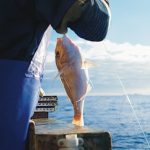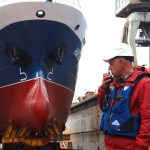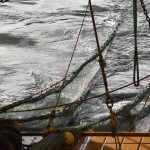It is fact that Bering Sea pollock are catch in huge quantities to make products such as fish sticks and imitation crab every year. They say the fleet increasingly is catching and killing a far more precious fish — chinook, or king salmon — while in pursuit of pollock. And this has become an issue of debate as federal fishery managers consider an unprecedented limit on how many chinook the pollock fleet can catch each year.
It is true that pollock is the nation’s biggest commercial catch by weight, worth well in excess of $1 billion after the white-meated bottom fish are processed. Depending on how stringent the chinook cap is, the pollock fleet could be forced to pull its huge nets from the water and stop fishing before the normal quota is reached. Pollock fleet are blamed for weak chinook returns to the Yukon and other drainages in recent years, and say the industry is capable of avoiding salmon if only the government will enforce a firm cap.
Karen Gillis, executive director of the Bering Sea Fishermen’s Association, opined that for some people, their feathers are up as far as they’ve ever been. There’s a lot of expectation here. Gillis added that one of the toughest problems in commercial fisheries management is controlling bycatch — the incidental catch of one kind of fish while pursuing another. A notable example is dolphins caught in tuna fisheries.
The problem in the Bering Sea is that chinook sometimes swim with the pollock, and so they’re swept up in the yawning nets. The council is considering proposals to cap the fleet’s annual bycatch at 68,392 chinook or fewer. High fuel and food prices have heightened the pain in parts of rural Alaska with salmon problems. Pollock fishermen are resigned to a cap, but they want a limit they can live with, said Brent Paine of United Catcher Boats, a Seattle trade group of 65 pollock trawlers.








